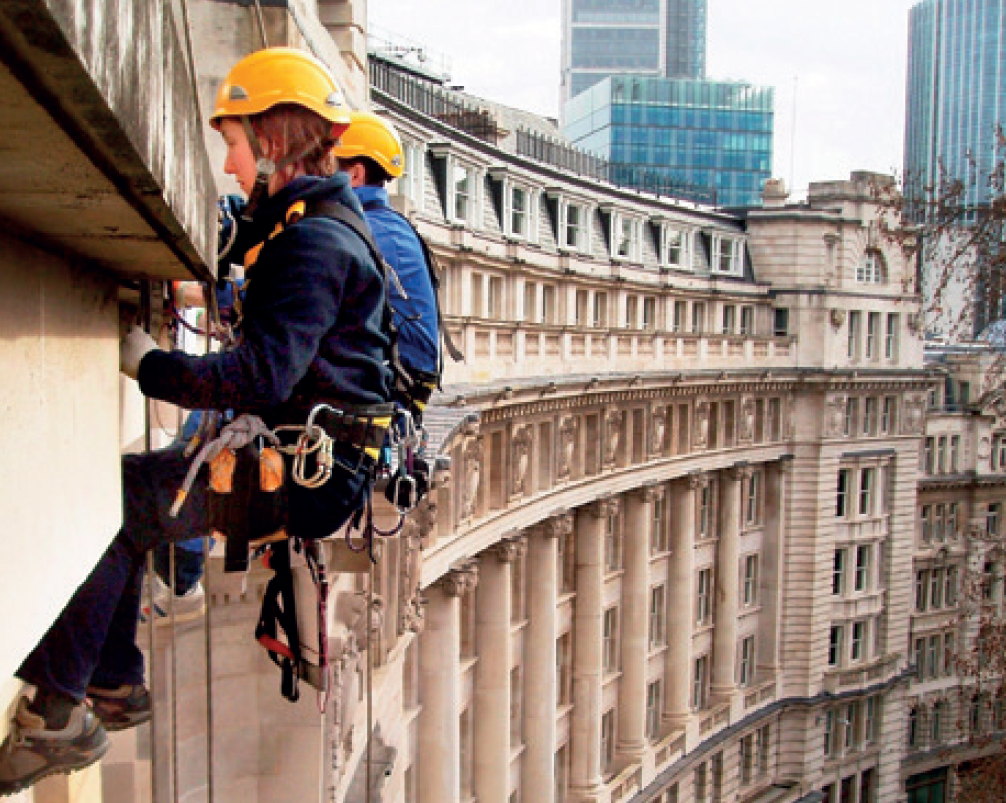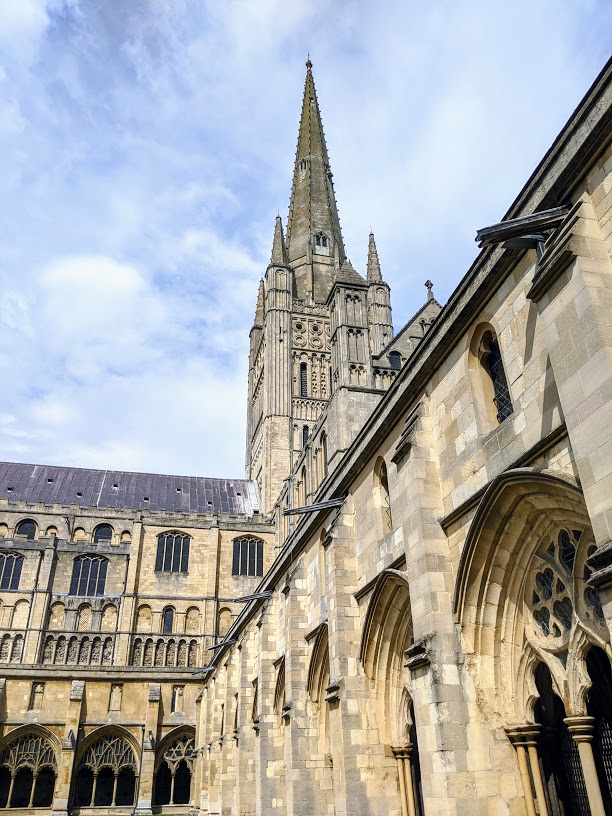Roped access for conservation projects

|
| This conservation expert from WallWalkers climbs the Norwich Cathedral spire to conduct restoration work. |
Contents |
[edit] Introduction
Roped access is a technique used by trained professionals to conduct specific tasks at height without the use of scaffolding. Ropes are used to provide access and relay equipment.
[edit] History
Roped access has been used throughout history for building and maintaining structures. It became increasingly sophisticated as buildings became taller.
In the 1980s, roped access technicians began to adopt caving and mountaineering techniques that deployed a security rope as an extra level of safety. This made it possible for users to carry their tools and equipment with them or request tools to be sent to the proper location by way of the other rope system.
[edit] Scaffolding or ropes?
Although scaffolding has gained popularity for work at height, it can be costly, unsightly and potentially damaging to the roof or structure while creating obstructions for pedestrian and vehicular traffic below. There are also some instances where skyscrapers are so tall that scaffolding and platforms are impractical for maintenance, inspection and repair.

|
| Geophysicists and structural engineers work together to survey a historic façade using roped access. |
For modern buildings, roped access can be used for specialist purposes such as window cleaning on skyscrapers. It is also suitable for conservation or renovation tasks on older tall structures where preservation or inspection might be difficult or inconvenient to conduct on scaffolding or other structurally complex systems.
Roped access allows technicians to undertake:
- Maintenance tasks required in difficult to reach or confined places.
- Work that needs to be completed in a timely manner (for both urgency and cost reasons).
- Repair work or research in situations where geophysical factors (such as historic mine works or other structural issues) prohibit the use of scaffolding.
- Projects that require the reduction of environmental, operational and structural impact.
[edit] Case study: Norwich Cathedral
In summer 2020, plans were made to restore the spire and golden weathervane at Norwich Cathedral. More than 900 years old, the cathedral was completed in 1145.

|
| This view of the spire is from the Cloisters of Norwich Cathedral. Like the cathedral itself, these Cloisters are the second largest in England, only surpassed by those at Salisbury Cathedral. |
The cathedral’s first spire of timber and lead was completed in 1297, but was blown down in a storm in 1361. Another timber version was destroyed by lightning in 1463 and was rebuilt using brick faced with stone. It is this third surviving version of the spire that is the focus of the restoration project.
The cathedral is 315 feet (96 meters) high, including the weathervane, making it the second tallest in England after Salisbury Cathedral at 404 feet (123 m). Repair work is also taking place on the golden cockerel weathervane, which dates from 1756.
The spire has gone through many repair projects over the centuries, but the most recent took place in the 1980s. According to the Rev Dr Peter Doll, Canon librarian and Vice Dean of the cathedral, some of the previous restoration work has not maintained its structural integrity over the years.
The work includes repointing joints and replacing loose stone on the spire, replacing rusted iron structures with stainless steel, repairing damaged stonework and regilding the golden weathervane in gold leaf, which was removed in order to undertake the repairs. It is believed that the cockerel has not been taken down since 1963.
The restoration project is being undertaken by a specialty rope access heritage company. The father and son conservation team of Chris and Sam Milford use mountaineering techniques and carefully placed ropes to climb the spire.
Before undertaking the restoration aspect of the project, the Milfords had to scale the spire to set up the special rope system that would be used for the repair work. The system allowed the work to be carried out without the need for scaffolding.
[edit] Related articles on Designing Buildings Wiki
IHBC NewsBlog
Images from inside a Grade II listed hotel show the scale of its collapse
The Corbett Arms in Tywyn has fallen into serious disrepair.
Old Sarum fire in listed (& disputed) WW1 Hangar - Wiltshire Council has sought legal advice after fire engulfed a listed First World War hangar that was embroiled in a lengthy planning dispute.
UK Antarctic Heritage Trust launches ‘Virtual Visit’ website area
The Trust calls on people to 'Immerse yourself in our heritage – Making Antarctica Accessible'
Southend Council pledge to force Kursaal owners to maintain building
The Council has pledged to use ‘every tool in the toolbox’ if urgent repairs are not carried out.
HE’s Research Magazine publishes a major study of the heritage of England’s suburbs
The article traces the long evolution of an internal programme to research 200 years of suburban growth
IHBC Context 183 Wellbeing and Heritage published
The issue explores issues at the intersection of heritage and wellbeing.
SAVE celebrates 50 years of campaigning 1975-2025
SAVE Britain’s Heritage has announced events across the country to celebrate bringing new life to remarkable buildings.
IHBC Annual School 2025 - Shrewsbury 12-14 June
Themed Heritage in Context – Value: Plan: Change, join in-person or online.
200th Anniversary Celebration of the Modern Railway Planned
The Stockton & Darlington Railway opened on September 27, 1825.
Competence Framework Launched for Sustainability in the Built Environment
The Construction Industry Council (CIC) and the Edge have jointly published the framework.













